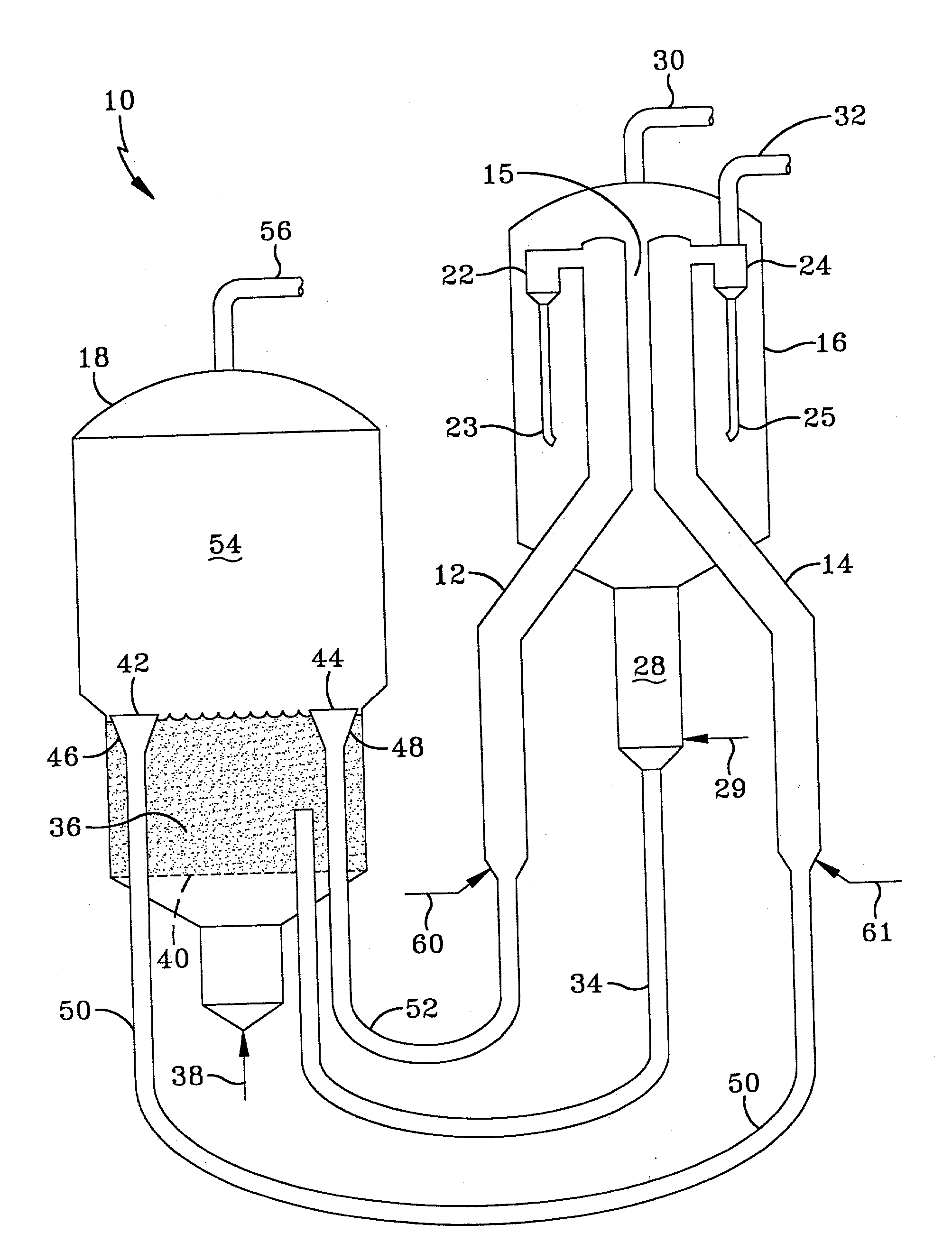Fluid cat cracking with high olefins production
a technology of flue cat and high olefins, which is applied in the direction of hydrocarbon oil cracking process, hydrocarbon oil treatment products, physical/chemical process catalysts, etc., can solve the problems of high cost of adding additional vessels to an existing fcc unit, limited olefin yield from the cracking reaction,
- Summary
- Abstract
- Description
- Claims
- Application Information
AI Technical Summary
Benefits of technology
Problems solved by technology
Method used
Image
Examples
Embodiment Construction
[0022] A commercial FCC unit operating with only an FCC feed riser and a cracking catalyst which comprised a mixture of ZSM-5 and a USY zeolite-containing catalyst, was compared with the process of the invention (Base+), using data generated in pilot plants. The commercial unit was processing a vacuum gas oil feed (API=20.8), using a catalyst blend of a commercial USY-containing catalyst and a commercially available ZSM-5 catalyst. The blend contained about 34 wt. % of a USY zeolite and 0.2 wt. % ZSM-5. The MAT activity of this catalyst blend was 71. With a riser outlet temperature of 975.degree. F. (524.degree. C.) and a catalyst to oil weight ratio of 5, the yields obtained in the Table below, under BASE FCC, were achieved.
[0023] Two different pilot plants were used to demonstrate the improved FCC process of the invention. A circulating pilot plant was used to simulate the primary riser for cracking fresh feed and a bench scale unit was used to crack 60-430.degree. F. boiling rang...
PUM
| Property | Measurement | Unit |
|---|---|---|
| unit cell size | aaaaa | aaaaa |
| unit cell size | aaaaa | aaaaa |
| mole ratio | aaaaa | aaaaa |
Abstract
Description
Claims
Application Information
 Login to View More
Login to View More - R&D
- Intellectual Property
- Life Sciences
- Materials
- Tech Scout
- Unparalleled Data Quality
- Higher Quality Content
- 60% Fewer Hallucinations
Browse by: Latest US Patents, China's latest patents, Technical Efficacy Thesaurus, Application Domain, Technology Topic, Popular Technical Reports.
© 2025 PatSnap. All rights reserved.Legal|Privacy policy|Modern Slavery Act Transparency Statement|Sitemap|About US| Contact US: help@patsnap.com

